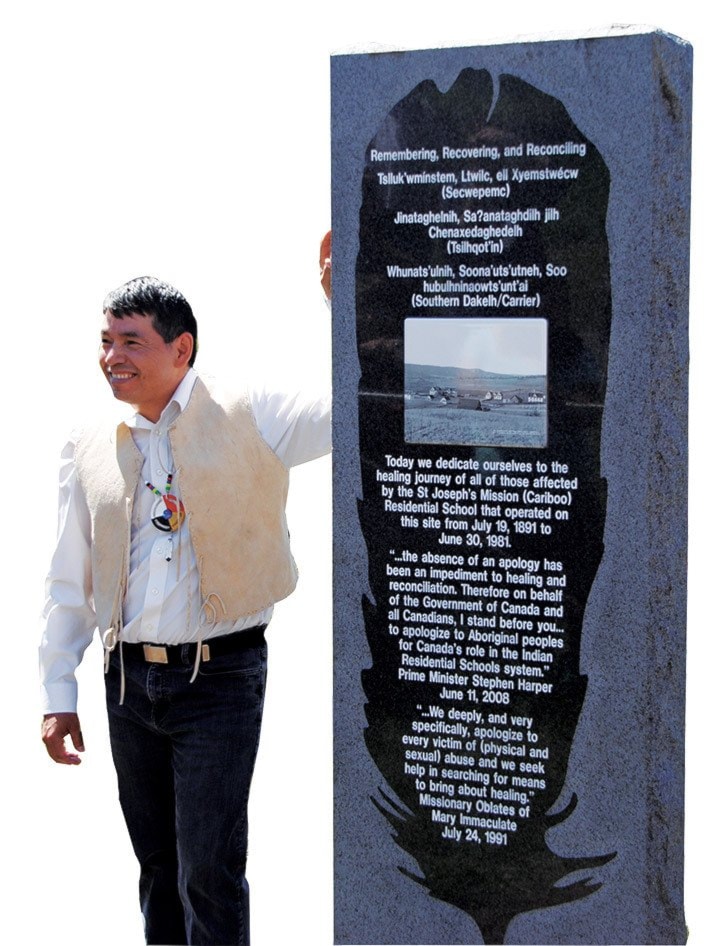Canada’s Indian residential schools are a legacy our country cannot be proud of.
They were created to deal with the problem of what to do with the indigenous people who populated the land base in the face of European colonization.
Two conflicting ways of life were at polar opposites.
Euro-Canadians tended to think of themselves as superior to the indigenous people who had lived in North America for millennia.
Many felt the Aboriginal people were less evolved or even less human than white Europeans.
There was an overriding expectation that native people and their cultures tied to the land would eventually die off. But this didn’t happen.
St. Joseph’s Mission opened its doors in the San Jose Valley, a few miles from the head of Williams Lake, on July 5, 1867, just four days after the birth of Canada.
The Oblates of Mary Immaculate assigned Irish priest Father James Maria McGuckin to establish the mission as a place to educate local First Nations and teach Christianity. He pre-empted some land then purchased an additional 320 acres to be used as a school and farming village.
The first school opened in 1872 to teach white and half-white boys.
Four years later the Sisters of St. Anne opened a school for girls. But it wasn’t until 1886 that St. Joseph’s became a residential school for Aboriginal children.
From the outset the blueprint for Canada’s Aboriginal education system was flawed. A popular slogan for these residential schools was to “kill the Indian in the child.” This wasn’t considered cultural genocide in the 1800s.
Across the Cariboo Chilcotin children as young as four years old were forcibly taken away from their families and home communities and brought to St. Joseph’s Mission residential school where they were confined for 10 months of the year. They were punished for speaking their own language or practicing their culture.
Chris Wycotte Sr., a band councillor and treaty negotiator for T’exelc (Williams Lake Indian Band), says he went to residential school at the Mission only a few miles from his home at Sugar Cane.
“They wouldn’t allow you to speak your language or practice any part of your culture. Once you got out for summer holidays, you reverted back to what you were before you went to the mission. That’s how we managed not to lose it.”
He credits his grandparents for keeping his Secwepemc language and culture alive.
“My grandparents made sure we didn’t lose it. They only spoke to me in Shuswap even though my mom and dad only spoke to me in English.”
He says his parents knew he would be punished for speaking Secwepemc when he returned to the mission.
“But our grandparents made sure they only spoke to us in Shuswap until we understood it.”
Wycotte says Secwepemc was his parents’ first language when they went to the mission, and English was their second language. But he says the opposite was true for him.
“For my generation it slowly turned around into English being our first language.”
Wycotte says when he returned to the mission in September some of the kids would have dried meat, dried salmon or buckskin they brought from home.
“To us it was a delicacy – our highly valued food. At the start of school the supervisors would go through our stuff and anything like that they’d just throw in the garbage. It never happened to me but I felt really bad and offended about it. How could they do that kind of stuff? How can they take something that valuable and just throw it in the garbage?”
The residential school was only four miles from Wycotte’s home.
“But I couldn’t even come home to see my mom and dad. One time we were brought from the mission to Sugar Cane for Sunday Mass at Easter. We could go to Mass and visit with our mom and dad for half an hour or so. Then we were brought back to the mission.”
Wycotte says he attended the mission with kids who were Dakelh (Carrier), Tsilhqot’in, Lillooet as well as Secwepemc.
In 2008, Prime Minister Stephen Harper publicly apologized for Canada’s role in the “aggressive assimilation” of Aboriginal children through the government-supported, church-run residential schools.
The strategy was to separate Aboriginal children from their families, communities, languages and cultures, by placing them in institutions whose purpose was to “kill the Indian in the child.”
The Harper apology was an admission that the idea was not only deeply flawed, but had caused a great deal of pain and damage for generations of Aboriginal families.
Prime Minister Justin Trudeau’s statement that Aboriginal people in Canada really do matter, has raised hopes for a better future.
For treaty negotiator Chris Wycotte, the proof will be what happens on the ground. He’s waiting to see how different things will actually be.
